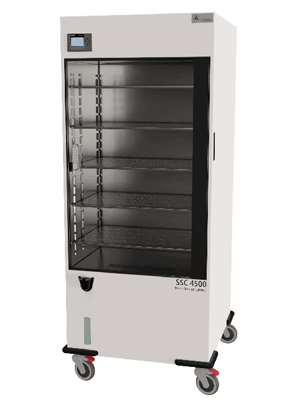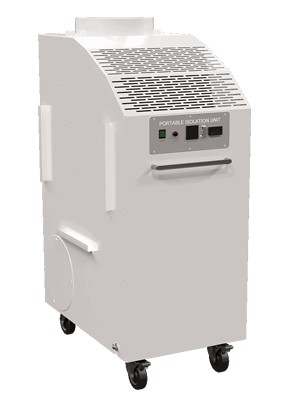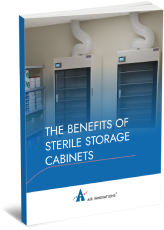Tag: Healthcare
Improper medical supply storage increases the risk of contamination and pathogen growth. Should healthcare professionals and facilities handle or store tools and materials improperly, medical institutions must resterilize equipment or throw out supplies, increasing operational inefficiency and waste. When the integrity of medical supplies is negatively impacted somewhere along the supply chain, this could necessitate an expansive, costly recall.
Investing in sterile storage equipment you can trust mitigates these risks, significantly reducing costs and liability. You can ensure reliable medical supply storage by selecting a product solution that’s compliant with relevant AORN, AAMI, and ASHRAE standards. Learn more about these sterile storage standards and their requirements for temperature, humidity, and ventilation.
Understanding Sterile Storage Standards
Healthcare organizations refer to three main sets of standards when purchasing sterile storage systems:
- AORN standards for storage of sterile supplies. These standards outline proper sterile processing and what steps must be followed surrounding perioperative care. They apply to clinical concerns and procedures.
- AAMI standards for storage of sterile supplies. AAMI’s more technical standards detail the parameters for compliant medical device storage and sterilization.
- ASHRAE sterile storage temperature and humidity standards. These standards apply to HVAC and ventilation systems, aiming to create proper environments for sterile storage by controlling factors like temperature and humidity.
Each set of standards is different and focuses on its own unique criteria, but there’s also considerable overlap. Depending on your needs, you can procure sterile storage solutions that simultaneously comply with all three sets of standards.
1. AORN Standards
The Association of periOperative Registered Nurses, or AORN, has established strict standards regarding clinical practices and procedures for utilizing and handling supplies in perioperative environments. These AORN guidelines for storage of sterile supplies decrease the chance of supply mishandling and subsequent contamination from simple human error.
The standards advise how to effectively manage and organize supplies in and around operating rooms; safely retrieve, store, and package medical supplies to optimally retain their sterility; perform visual supply inspections; and determine the length of time that items will remain sterile in relation to their storage and packaging. Proper temperature, humidity, and ventilation under AORN standards for sterile storage areas are as follows:
- Maximum temperature of 78 °F
- Relative humidity levels of 60% or below
- Minimum hourly total air change rate of four
- Positive-pressure airflow
2. AAMI Standards
The Association for the Advancement of Medical Instrumentation (AAMI) sets standards for the technical factors involved in proper sterile storage, evaluating storage equipment and packaging materials for their suitability in maintaining medical instrument and device sterility and integrity. Specifically, they determine how aspects like temperature and humidity impact device functionality and the sterile barrier’s longevity. AAMI standards also outline necessary verification and validation methods to ensure sufficient compliance.
One of the ANSI/AAMI standards for sterile storage to focus on is ST79:2017. Sections 3.2.1.1, 3.3.5.5, and 3.3.6.1.1 outline how the healthcare sector should manage steam sterilization as well as best practices for sterility assurance. AAMI sterile storage temperature and humidity standards also give the environmental requirements for storage, which include:
- Keeping the temperature at or below 75 °F
- Ensuring relative humidity stays below 70%
- Maintaining positive air pressure and sufficient ventilation
3. ASHRAE Standards
The American Society of Heating, Refrigerating and Air-Conditioning Engineers (ASHRAE) has guidelines for the minimum acceptable ventilation and air filtration in sterile storage for successfully reducing microbial growth and airborne contaminants. To help healthcare organizations achieve and maintain consistent sterility control, these standards support optimized environmental infrastructure in sterile storage applications through HVAC system design and dependable performance.
Table 7.1 of ASHRAE’s Standard 170-2008 details requirements similar to AORN sterile storage standards for central medical and surgical supply settings and their environmental conditions, as follows:
- Positive air pressure in relation to the storage space’s surroundings
- Temperatures ranging from 72 °F up to 78 °F
- Relative humidity of 60% or below
- At least four total air exchanges each hour (with at least two being outdoor air exchanges)
Air Innovations: Your Partner in Sterile Storage
The right sterile storage equipment can help hospitals and medical centers maintain proper environmental conditions and airflow. At Air Innovations, our expert team designs and builds custom environmental control systems to support our healthcare clients. Products like our sterile storage cabinets, IsolationAir® systems, and cleanroom environmental control and HVAC systems are manufactured to meet or exceed industry standards such as USP 797 and 800, ASHRAE, and ISO 4 Cleanliness.
To discuss the ideal sterile storage solution for your facility, contact our team today.
Note: The SSC4500 and IsolationAir are not intended for use in the diagnosis of disease or other conditions or in the cure, mitigation, treatment, or prevention of disease in humans or in other animals.




